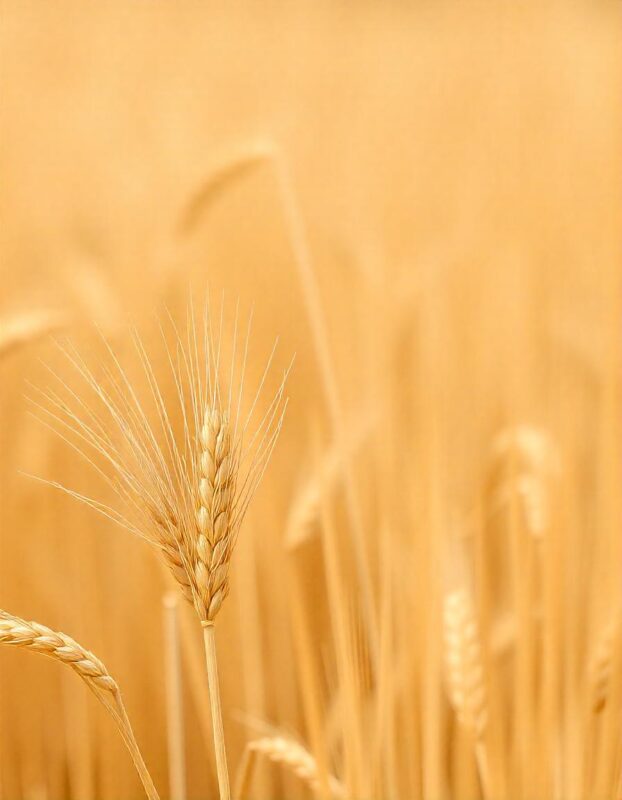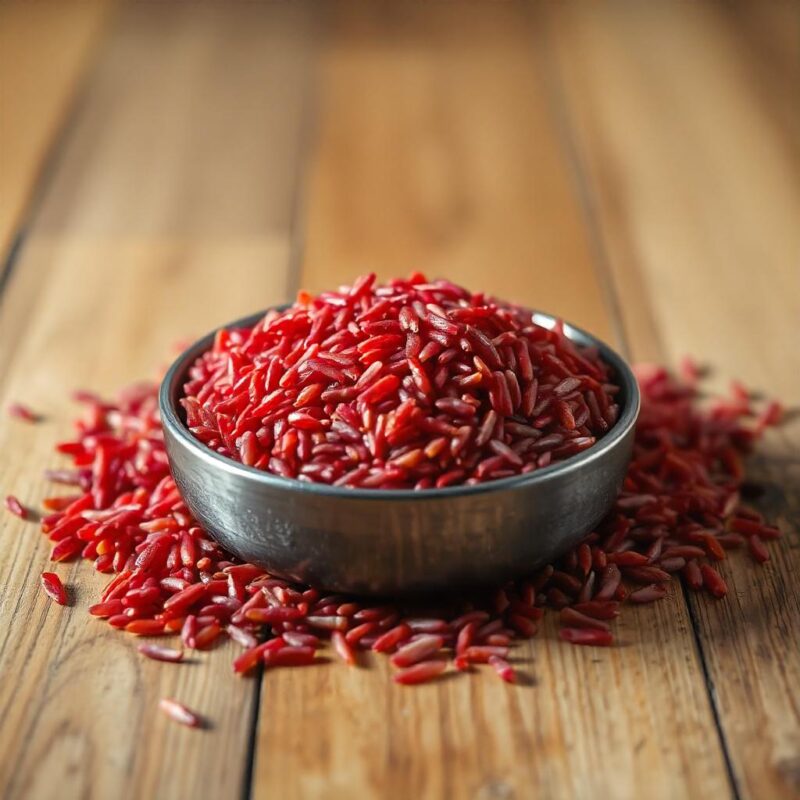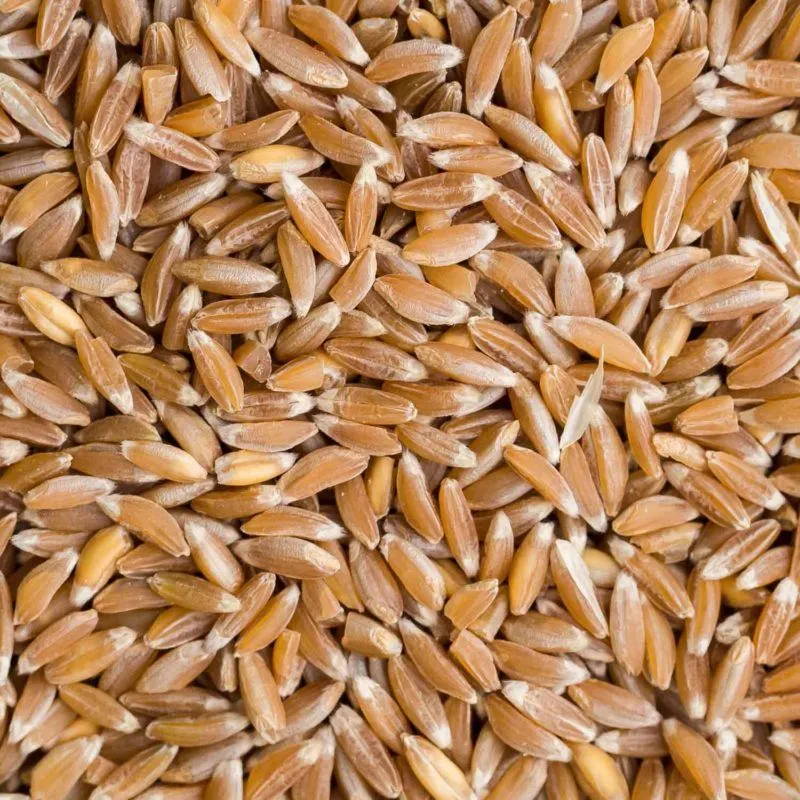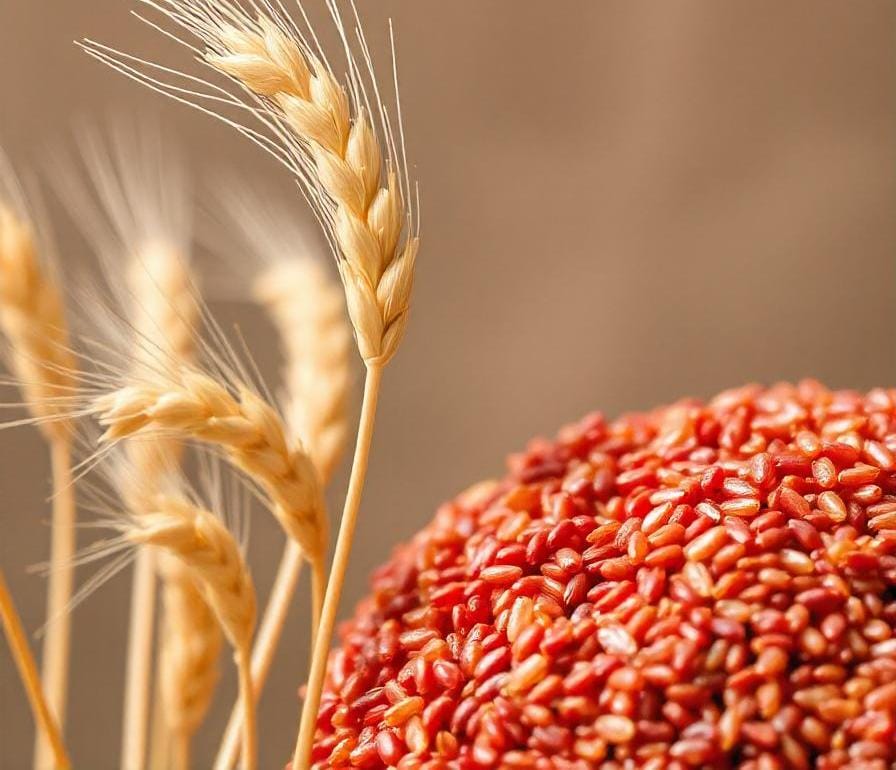The Nutritional Powerhouses: Emmer Wheat and Red Rice.
In a constantly evolving world where food trends shift rapidly, ancient grains like Emmer wheat and Red rice have stood the test of time. These nutritional powerhouses have been cultivated for centuries, providing sustenance to civilizations and offering health benefits that modern grains often lack. As interest in whole grains and natural foods resurges, Emmer wheat and Red rice are gaining popularity again for their rich history, unique flavor profiles, and impressive nutritional content.
This blog will explore these two ancient grains, their nutritional benefits, culinary uses, and how they can be easily incorporated into a modern, healthy diet.

The History of Emmer Wheat.
Origins and Ancient Use Emmer wheat, also known as Triticum dicoccum, is one of the oldest cultivated grains. It served as a staple food for ancient civilizations such as Mesopotamia and Egypt, with a history dating back nearly 10,000 years. In Italy, it is often referred to as “farro.” As a member of the wheat family, Emmer wheat is considered an ancient grain because it has been grown for thousands of years with little genetic modification.
Early farmers greatly valued Emmer wheat for its resilience. It thrives in various environmental conditions and is relatively resistant to pests and diseases.
Nutritional Value
Emmer wheat has a rich nutritional profile that sets it apart from modern wheat varieties. It is an excellent source of:
- Protein: Emmer wheat is high in protein, making it a popular choice for those seeking plant-based protein sources.
- Fiber: Whole-grain Emmer contains dietary fiber, which is essential for digestion and maintaining a healthy gut.
- Vitamins & Minerals: It is a good source of B vitamins (especially niacin, which supports metabolism), magnesium, iron, and zinc. In addition, Emmer wheat is lower in gluten compared to modern wheat varieties. Although it’s not suitable for individuals with celiac disease, those with mild gluten sensitivities may find it easier to digest than common wheat.

The Journey of Red Rice.
A Cultural and Nutritional Staple
Red rice is an ancient grain with deep cultural and historical roots, particularly in Asia. It has a vibrant reddish-brown hue and has been cultivated for centuries in regions like Bhutan, India, Sri Lanka, and Thailand. The distinctive color comes from the anthocyanins, which are powerful antioxidants.
While white rice has become more common in many parts of the world due to its faster cooking time and softer texture, red rice has retained its popularity due to its robust flavor, chewy texture, and rich nutritional benefits. It is often considered a healthier alternative to processed white rice.
Nutritional Profile Red rice is more than just a colorful grain. It contains a high level of nutrients including: – Antioxidants: The red color in the bran of the rice comes from anthocyanins, which have been linked to anti-inflammatory properties and help protect the body against free radicals. – Fiber: Like all whole grains, red rice is packed with dietary fiber, promoting digestive health and aiding in weight management by keeping you full longer. – Minerals: Red rice is a good source of magnesium, iron, calcium, and zinc—essential minerals that contribute to overall health, from bone strength to immune function. – Low Glycemic Index: Red rice has a lower glycemic index compared to white rice, meaning it has a more gradual impact on blood sugar levels. This makes it a better choice for individuals managing diabetes or those looking to maintain stable energy levels throughout the day.

Health Benefits of Emmer Wheat and Red Rice
Both Emmer wheat and Red rice offer several health benefits that make them excellent choices for individuals seeking a nutritious, whole-food diet.
Heart Health:
The fiber content in both Emmer wheat and Red rice helps reduce cholesterol levels, which can lower the risk of heart disease. Whole grains, in general, are linked to better cardiovascular health, and these ancient grains provide an extra edge due to their high antioxidant and mineral content.
Improved Digestion:
Emmer wheat’s and Red rice’s rich fiber content supports a healthy digestive system. Fiber promotes regular bowel movements, prevents constipation, and helps maintain a balanced gut microbiome.
Weight Management:
Both grains are low in fat and high in complex carbohydrates, making them great options for those looking to manage their weight. They promote satiety, helping to curb overeating by keeping you full for longer periods.
Rich in Antioxidants:
The antioxidants found in Red rice, particularly anthocyanins, contribute to reducing oxidative stress in the body. Antioxidants are crucial in preventing cellular damage and reducing the risk of chronic diseases, including certain cancers.
Blood Sugar Control:
The low glycemic index of both Emmer wheat and Red rice ensures that they don’t cause sharp spikes in blood sugar levels, which is essential for preventing or managing diabetes. Whole grains are broken down more slowly by the body, leading to more stable energy levels and better blood sugar control.

Culinary Uses: How to Incorporate Emmer Wheat and Red Rice Into Your Diet
Despite their ancient origins, Emmer wheat and Red rice are versatile ingredients that can easily be integrated into modern cooking.
Their nutty, earthy flavors complement a variety of dishes.
a. Cooking Emmer Wheat
Emmer wheat can be cooked similarly to other whole grains like quinoa or barley. It works well in:
- Salads: Emmer wheat’s chewy texture makes it a great base for hearty salads, mixed with fresh vegetables, herbs, and olive oil.
- Soups & Stews: Add Emmer to soups for extra bulk and nutrition.
- Pilafs & Grain Bowls: Use it in place of rice or couscous in grain bowls, combined with roasted vegetables, protein, and a flavorful dressing.
b. Cooking Red Rice
Red rice can be used in most dishes where you’d typically use white or brown rice. Its rich flavor pairs well with:
- Stir-fries: The slightly chewy texture of Red rice adds substance to stir-fries.
- Curries: Red rice’s ability to absorb flavors makes it a perfect accompaniment to spicy curries.
- Grain Salads: Like Emmer, Red rice works beautifully in grain salads, particularly those with citrusy or acidic dressings to balance its earthy flavor.

Emmer Wheat and Red Rice: Health Benefits for You and Your Family
Incorporating whole grains like Emmer wheat and Red rice into your family’s diet is a fantastic way to boost overall health. These ancient grains are not just packed with nutrients but also come with unique health benefits that can be beneficial for everyone in the family—from children to adults. Let’s dive into how they can improve family health and nutrition.
Health Benefits of Emmer Wheat
a. High in Protein for Growing Children
Protein is essential for growth and development, especially in children. Emmer wheat is a rich source of plant-based protein, making it an excellent option for children and teenagers. It supports muscle growth, tissue repair, and the production of enzymes and hormones in growing bodies.
b. Rich in Fiber for Digestive Health
Emmer wheat’s high fiber content promotes healthy digestion, which is important for the whole family. Fiber helps regulate bowel movements, prevents constipation, and supports a healthy gut microbiome, which plays a crucial role in overall immune function.
- For kids: Including fiber-rich grains in their diet can help prevent digestive issues, ensuring they get the most nutrients from their meals.
- For adults: Fiber can help maintain a healthy weight and lower the risk of heart disease by reducing cholesterol levels.
c. Low in Gluten – Easier for Sensitive Stomachs
While Emmer wheat does contain gluten, it is lower in gluten than modern wheat varieties. Some people with mild gluten sensitivities may find it easier to digest. This can be beneficial for families trying to reduce gluten intake without eliminating it entirely.
Health Benefits of Red Rice
a. Antioxidants for Immunity
Red rice is rich in antioxidants, particularly anthocyanins, which give the grain its reddish hue. These antioxidants help neutralize free radicals in the body, reducing inflammation and boosting the immune system.
- For children: A strong immune system is crucial for preventing common illnesses like colds and flu.
- For older adults: Antioxidants help reduce the risk of chronic conditions like heart disease, diabetes, and even certain cancers.
b. Essential Minerals for Bone Health
Red rice is a good source of minerals like magnesium and calcium, which are essential for bone health and the prevention of osteoporosis. This makes it a great option for:
- Growing children: Their developing bones require adequate calcium and magnesium for proper formation and strength.
- Older adults: Including Red rice in the diet can help protect against bone density loss and the risk of fractures as they age.
c. Low Glycemic Index for Stable Energy
Red rice has a low glycemic index, meaning it releases sugar into the bloodstream more slowly than white rice. This helps prevent blood sugar spikes and crashes, providing sustained energy throughout the day.
- For kids: Red rice helps maintain steady energy levels, preventing the post-meal sugar crashes that can make children feel tired or irritable.
- For adults and seniors: Managing blood sugar is especially important for those with diabetes or those at risk of developing it. Red rice can help keep blood sugar levels stable, promoting long-term health.
Why Whole Grains Matter for Family Health
Emmer wheat and Red rice are both considered whole grains, which means they retain the bran, germ, and endosperm of the grain. This makes them much more nutritious than refined grains, which have these components removed during processing. Whole grains offer a wide range of health benefits, including:
– Improved heart health: Whole grains can help lower cholesterol levels, reduce blood pressure, and decrease the risk of heart disease.
– Better digestion: The fiber in whole grains supports healthy digestion and can prevent issues such as constipation and bloating.
– Weight management: Whole grains can help you feel fuller for longer, making it easier to control portion sizes and avoid overeating.
For families looking to make healthier food choices, incorporating whole grains like Emmer wheat and Red rice into their meals is a simple step.. and an effective way to boost nutrition.
Conclusion: Embrace the Benefits of Ancient Grains
Introducing Emmer wheat and Red rice into your family’s diet can have a profound impact on overall health. These ancient grains provide essential nutrients, support digestion, and promote heart health. They are versatile, delicious, and a great way to add variety to your meals while ensuring everyone gets the nutrition they need. Whether you’re cooking for kids, teenagers, or adults, both Emmer wheat and Red rice can become staples in a healthy, balanced family diet. By incorporating these grains into your regular meals, you’re not only embracing a rich culinary history but also promoting long-term well-being for your loved ones.



